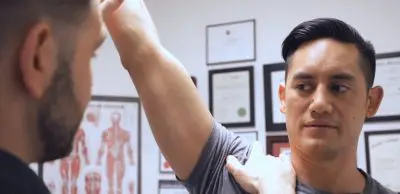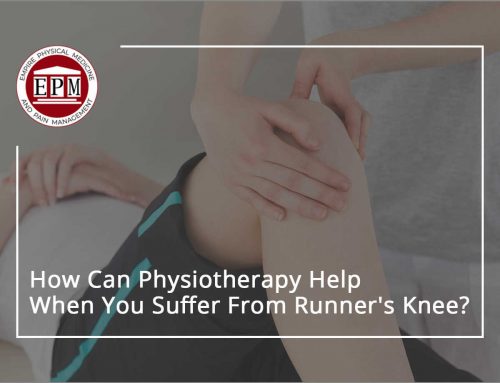How to do physical therapy exercises at the comfort of your home?

When you are first starting your physical therapy treatment, it is important to work with your therapist two to three times a week.
It is just as important to work on your stretches and exercises at-home as well.
After all, spending approximately an hour per week with your physical therapist can only help so much in terms of your progress; performing at-home exercises will help you maximize your results in rehabilitating and retraining the muscle.
PT therapists will educate and train you to do physical therapy exercises at home that you can do to strengthen your muscles and sustain your new function.
Below, we outline exercises and stretches you can do in the comforts of your own home, with common household items you likely have lying around.
Belt – Place both hands on each end of the belt. Lay on the floor and place your foot on the middle of the belt. In this position, raise your leg as close to your head as you can while keeping your leg straight. Hold this position for ten seconds. This will stretch your calves and hamstring.
Tennis Ball – A tennis ball can make a huge difference in relieving your aches by releasing myofascial stress and tension. Place a tennis ball between your body and the wall. Move your body back and forth and place focus on the area you would like to work on (i.e. shoulders, mid-back, lower back). If you have tight hip muscles, place the tennis ball on the floor. Apply pressure by rolling up and down on the ball between your hip and knee to target your IT band. You can also place the tennis ball on the floor, lay down and roll it horizontally along your spine to relieve back pain while doing physical therapy exercise by yourself.
Soup Cans – If you don’t have dumbbells at home, no sweat! Reach into your cupboard for two cans of soup for some makeshift weights; one 16 ounce can is equivalent to one pound. There are plenty of exercises you can do with soup cans. If you’re looking to strengthen the shoulders, begin by holding a soup can in each hand with your arms to your side. Lift your arms slowly so that your arms are parallel to the floor and at the same level as your shoulders. Lower them slowly and repeat ten times.

Silly Putty – This fun, moldable material is not just for kids. It is also great for building strength and dexterity in your fingers and hands. Simply roll the putty into a ball and place it into your hand. Squeeze it firmly as if it were a stress ball and hold for a few seconds. Release slowly and repeat ten times.
Chair – A chair that has no wheels, such as a kitchen or dining room chair, can be especially useful to perform physical therapy exercises and stretches on. If you are working on strengthening your knee, a great exercise is the knee flexion stretch. To perform this, sit on the edge of the chair and place the affected leg behind you with the other leg at a 90 degree angle. Hold the stretch for 15 seconds and return it back to the starting position. Repeat.
Hand towel – Hand towels make a great tool for those looking to build their grip strength. If you’re suffering from carpal tunnel or arthritis, try this exercise: roll up the towel between both hands until it is a few inches in diameter. Grip it tightly for five seconds, then release. Repeat this exercise 15 times. Another exercise you can perform: while holding a hand towel, extend your arms behind you as far as you can while keeping them straight. Hold this for ten seconds and repeat.
Performing these at-home exercises are an important component of your treatment and will be integral to your continued growth and treatment’s success.
The more you work on stretching, strengthening and retraining your muscles, the more progress you will make on your road to a successful recovery.
How often do we wake up a “crick” in the neck or lift something and feel pain in the lower back and say to ourselves that it will resolve on its own?
Most of the time, especially as we get older, pain tends to linger and return to haunt us later on. Pain is usually a signal that something is wrong with our bodies and often times it is hard to pinpoint the cause.
Going to the ER or urgent care is something most of us dread, as waiting times are long, and who wants to be stuck in a room with sick people and in pain?
There are many home remedies that are available to us in our own home. Often times, just adjusting your body position can prevent pain from arising.
Knowing what to do to relieve pain can prevent further damage and can save you a trip to the doctor’s office. Knowing the difference between a casual pain and something that really needs to be looked at is valuable so that we can avoid a true medical emergency before it is too late.
Here are some more tips to address pain by performing physical therapy exercises using items around the home or which are available at the local drugstore or by simply changing the way you do things:
Neck pain and Headaches
One of the most common areas of pain are neck pain and headaches. As technology develops, we are finding ourselves dependent on our workstation to get more jobs done at a faster pace.
Whether it’s sitting in front of the computer, texting on our cell phones, or sitting on the couch watching television, often we are maintaining a less than optimal posture.
Postural strain is the most common cause of neck pain and headaches and can be easily remedied by adjusting your workstation. Making sure your eyes are level with the screen helps keep your head from hanging down or protruding forward.
Forward head posture puts increased strain and tightness in your neck since the muscles have to work hard to hold your head up as gravity pulls it more forward over time. Who wins?
Gravity does, which leads to overworked and sore muscles. Reducing the brightness of your screen can help to lessen eye strain that can trigger headaches. Learn to do physical therapy exercises on your own.
What does one do if the pain is already in full force? Applying an ice pack to a sore neck or eyes for ten minutes at a time can alleviate acute pain related to muscle soreness.
If neck pain is chronic, meaning the pain has already been there for years, you can try applying a heat pack, instead of cold, directly to the painful area for the same amount of time.
Heat helps to improve circulation and relaxes muscle tissue, thus reducing pain temporarily. Many also find soaking in a hot bath very therapeutic and add Epsom salt to provide additional relief.
An active way to reduce neck pain and headaches after a long drive or long day at the office is to stretch laying down on a cylindrical foam roller vertically and letting your arms drop down to the sides, holding the position for 30 seconds at a time.
Taking deep breaths and listening to guided meditation can also promote relaxation and stress relief.
Low Back Pain
The most common areas of pain are in the lower back but there are physical therapy exercises that you can do at home.
Whether it is acute or chronic in nature, back pain can be most debilitating. Muscles in the back easily become tense after prolonged activities, especially if there has been a history of an injury.
When severe, pain can radiate from the low back down the leg, most commonly known as sciatica. Back pain can be dull, sharp, stabbing, and/or stiff, and often worsens with prolonged static positions.
If back pain is acute, i.e. happens suddenly, ice is the way to go. Heat packs can help reduce tension for more chronic conditions when you use them in addition to your physical therapy exercises.
If back pain is worse with activity, a brace or corset is often used to provide external stability. If pain is worse with being in one position too long, introducing a supportive surface is recommended.
For example, a firm surface is preferable to a soft one when it comes to improving pain with prolonged sitting. When sleeping, a firm mattress provides better support.
Placing pillows between the knees when lying on the side can provide significant relief for those with back pain. When lying on your back, pillows under the knees reduce the arch in the back and are more comfortable for those with back pain.
Everyone knows that getting a massage relieves stress and muscle tension, but it is not always easy to find someone to do it. Having a foam roller (usually 36 inches in length with a 6 inch diameter) is not only useful for neck pain, but also helpful for back pain.
While lying perpendicular onto the foam roller, you can roll back and forth onto a tight muscle and receive the same benefits as a massage. Stretching your leg and hip muscles consistently over time is also effective in reducing lower back pain.
Having flexibility you are in these areas enables you to move with less strain to your lower back muscles. To stretch your hamstrings, lay on the floor flat on your back and using a strap, belt, or sheet to pull your leg straight up until a stretch is felt in the back of the thigh.
A piriformis hip stretch can be done by lying on your back, placing the ankle on the opposite knee, and pulling the crossed knee toward the opposite shoulder.

Knee Pain
The exercises can be successfully done to relieve knee pain can most always be addressed on your own unless you have suffered an injury that needs medical attention.
For the everyday aches and pains in the knee, you can use the ice pack and hot pack depending on if it feels stiff or swollen. A stiff knee can be loosened up by hot pack, but an even better way is to ride a stationary bike for 5-10 minute.
The stationary bike is a great alternative to walking which can be limited by knee pain. A swollen knee can be addressed with ice. An easy reusable ice pack can be assembled with a zip lock bag with three parts water, one part rubbing alcohol and stored in the freezer.
A bag of frozen peas works just as well. Like back pain, a neoprene knee sleeve or brace purchased at the drugstore or online can help provide support and stability to help you continue with your activity with less pain. Of pain is severe, practice RICE (rest, ice, elevate, and compress).
Wrist Pain
Those working at the computer or even using a handheld device often experience wrist pain. which can be relieved at home. Wrist pain is commonly related to repetitive strain, such as moving the mouse to the right a hundred times in a row or typing with your wrists in a bad position for a long time.
Wrist pain can also be associated with feelings of numbness and tingling in the fingers and/or hand. To reduce repetitive strain, using ergonomic equipment is essential such as a wrist pad and ball type mouse which promotes a wider hand position.
The best thing to do is stretch the overused muscles. This involves pushing your hand back until you feel a stretch in the front forearm. You can also put your hands in a praying position and hold for 10-15 seconds at a time regularly throughout the day.
Wearing a brace also can provide support to the joint and is a good reminder to keep your wrist from bending excessively the wrong way.
Pain can be prevented and reduced in many of these ways just by being mindful of symptoms as they arise, finding out the cause, and applying these simple home remedies. Should pain persist or worsen, seeking medical help is your best bet.
Published By:
Empire Physical Medicine & Pain Management
7 W 45th St floor 9,
New York, NY 10036
Phone: (646) 665-7109
Website: https://manhattanpainrelief.com








